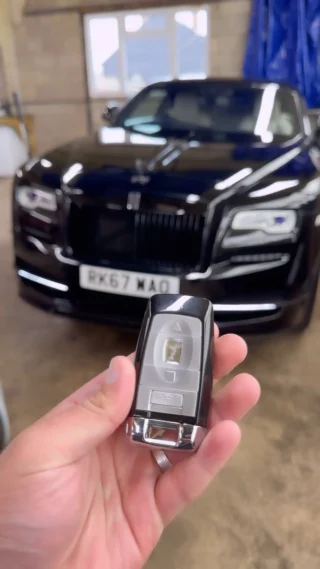
Car Key Case Repair
Add a review FollowOverview
-
Founded Date August 25, 1999
-
Sectors Animation
-
Posted Jobs 0
-
Viewed 27
Company Description
Door Lock Repair: The Good, The Bad, And The Ugly

Comprehensive Guide to Car Door Lock Repair: Troubleshooting and Solutions
The stability and functionality of a vehicle’s door locks are important for both the security of the car and the safety of its residents. Car door locks can experience a variety of issues, varying from minor mechanical problems to finish failures. This article seeks to provide an informative overview of car door lock repair, outlining typical issues, diagnostic treatments, and solutions.
Comprehending Car Door Locks
Before delving into repair treatments, it is essential to comprehend the components of a typical car door lock. There are 2 primary kinds of locks: mechanical and electronic.
Elements of a Car Door Lock System
- Lock Cylinder: The part where the key is inserted.
- Latches: Mechanisms that hold the door shut.
- Actuator: Electric motor in electronic locks that assists in locking and opening.
- Linkage: Connects the lock cylinder to the lock.
- Remote Key Fob: In electronic systems, this is utilized to lock and unlock the doors from a distance.
Typical Issues with Car Door Locks
Car door locks can stop working for a wide variety of reasons. Here are some common problems experienced by vehicle owners:
- Sticking or Frozen Locks: Especially in winter, locks can become hard to operate.
- Lock Not Engaging or Disengaging: Both mechanical and electronic locks can deal with concerns where they do not react to the key or remote.
- Key Jams: The key may get stuck in the lock, making it impossible to lock or unlock the door.
- Remote Malfunction: In electronic systems, the key fob might not work due to battery problems or programming problems.
- Physical Damage: Vandalism or mishaps can harm the lock mechanism.
Fixing Car Door Lock Issues
When a car door lock is not working properly, it is very important to diagnose the issue properly before proceeding with a repair. Below are actions that can help fix the concern:
Step-by-Step Troubleshooting
-
Visual Inspection:
- Check the door lock and surrounding parts for visible damage.
- Analyze the key for wear and tear.
-
Evaluate the Key:
- If the lock is sticking or not engaging, try utilizing a spare key if available.
- Guarantee the key is clean from dirt and particles.
-
Check the Actuator:
- Listen for any sounds when pushing the key fob. A clicking noise might suggest a malfunctioning actuator.
-
Inspect Door Wiring:
- Check the electrical wiring that links the door lock to the vehicle’s electrical system.
- Look for detached or torn wires.
-
Temperature level Influence:
- If the lock is sticking in winter, apply lithium grease to help oil the mechanism.
Repairing Common Door Lock Issues
When the problem has been detected, the repair can start. Here are some common repair methods for different concerns:
Fixing a Sticking or Frozen Lock
- Cleaning: Use a graphite lube or silicone spray to clean and lubricate the system.
- Heating: If frozen, use a hairdryer to warm the location around the locking system thoroughly, avoiding getting too hot.
Repairing a Lock Not Engaging/Disengaging
-
Lock Cylinder Replacement:
- If the lock cylinder is used, consider changing it. This typically includes prying off the door panel to access the lock mechanism.
-
Actuator Replacement:
- For electronic locks, if the actuator is defective, it will require replacement. Ensure to disconnect the battery before trying this repair.
Repairing a Jammed Key
- Extraction Tool: If a key is stuck, utilize a set of needle-nose pliers to gently pull it out, or a key extractor.
- Lock Lubrication: Apply a little quantity of lube to reduce the procedure.
Remote Key Fob Malfunction
- Battery Replacement: Most remotes have exchangeable batteries. Follow the maker’s instructions to change the battery.
- Reprogramming: Sometimes, the remote needs to be reprogrammed. Refer to the vehicle’s handbook for actions to reprogram the key fob.
Physical Damage Repairs
- Door Lock Assembly Replacement: If the lock is physically damaged, complete replacement of the lock assembly may be essential.
- Professional Help: If uncertain about DIY repairs, look for assistance from a certified mechanic.
Maintenance Tips for Car Door Locks
To prolong the life of car door locks, regular maintenance is essential. The following practices can assist maintain optimum performance:
- Regular Lubrication: Apply proper lube to the locks every few months.
- Keep Keys Clean: Regularly clean the car keys to prevent dirt buildup.
- Prevent Excessive Force: Do not utilize extreme force when locking or unlocking; this can trigger damage over time.
- Expect Signs of Wear: Be mindful to any modifications in the lock’s performance and address concerns quickly.
Frequently Asked Questions about Car Door Lock Repair
Q: How can I tell if my door lock is broken?A: Common
indications include the lock not engaging or disengaging, a jammed key, sounds from the door when using the key fob, or visible damage to the lock assembly.
Q: Can I repair a car door lock myself?A: Yes, many easy problems can be attended to by following the fixing steps in this short article, but complicated problems may need professional help. Q: What type of lubricant need to I utilize
for my locks?A: It is best to utilize graphite powder or silicone-based lubricants given that oil can draw in dirt and gunk. Q: How much does it generally cost to change a car door lock?A: The cost can vary extensively
based upon the vehicle’s make and model, but common replacement costs
can vary from ₤ 100 to ₤ 300, consisting of labor. Car door lock repair can seem difficult, but understanding the components and common issues can make the procedure a lot more workable. Whether taking on little repairs yourself or seeking expert help for more significant concerns, keeping the door locks working properly is necessary for vehicle security and safety. Routine upkeep and timely attention to problems can considerably extend the life of your car’s locking system.


